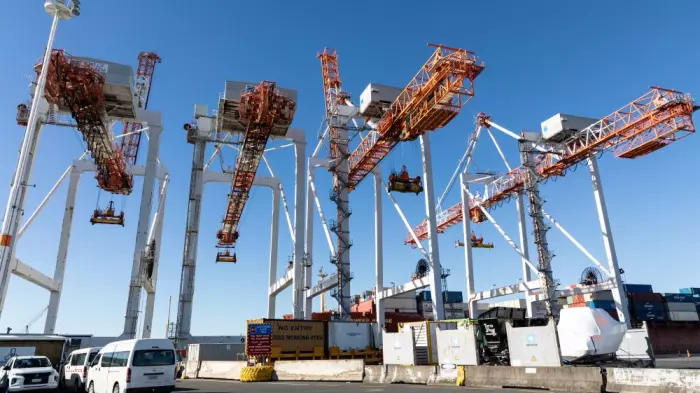At one level, the New Zealand economy today looks good, certainly compared with expectations at the start of the pandemic.
Tax revenues are high and unemployment is low. And the government’s half yearly economic and fiscal update (HYEFU) predicts more of the same to come. Our primary exports are booming and most businesses aren’t short of customers.
But there is another side to the story.
As some economists have put it, the NZ economy is “hot”, “overheating”, and “overcooked”.
The Reserve Bank says the economy is operating “above its current potential” (the kind of statement you’d never want to see on your kid’s school report).
Such statements are portentous of dark clouds on the horizon.
Or to put it another way, the economy is not on a sustainable footing.
And there is only one outcome when an economy is overheating: excess inflation.
Certainly, there are some temporary issues as a result of the pandemic. Supply chain problems and an exceptionally tight labour market, especially for skilled workers, are causing many businesses problems.
But there are deeper issues and unless we recognise and address them, inflation will continue to surge and interest rates will go up faster than otherwise, hurting hardworking New Zealanders.
At its most basic level, demand is outstripping what our economy can produce.
A sugar high
When you have an economy that is overheating, the last thing you should do is add more fuel to the fire. But that is exactly what the government is doing by pumping in big fiscal stimulus – like a sugar-filled syringe.
National will not be critical for the sake of it on this count, especially with the benefit of hindsight.
Stimulus, even if not perfectly doled out, was right at the start of the pandemic. We can argue retrospectively about Grant Robertson’s big spending, or indeed Adrian Orr’s, but in one of the most overused phrases of all time: it is what it is.
The problem is the emergency spending hasn’t stopped.
When the government spends, that money competes with every other dollar for scarce labour and resources. Some 15,000 more public servants in a relatively small economy makes a real dent. As does paying over the odds for land, rentals, consultants, and so on. Today, government spending is more than 40% higher than when Labour took office four years ago.
My larger concern is where we are going. Last week’s HYEFU shows spending 68% higher than 2017 – with $128 billion of government spending to be pumped into the economy next year alone.
Mr Robertson is giving himself $6b of new money in Budget 2022, almost quadrupling the budgets National delivered when in office (Remember Bill English – he gave us two zero budgets to ensure we got back into black).
Allocating such high levels of new operating spending is an extraordinary decision when the economy is already overheating.
While the size of this spending matters – especially given the debt our country is taking on to pay for it – what matters more to me is whether the spending is an investment or just spending for the sake of spending. And when the government can waste more than $50 million “exploring” the Auckland Bike Bridge it later cancelled, it all looks pretty loose to me.
Indeed, when the finance minister says it’s all necessary and to argue otherwise is some sort of “neoliberal” austerity, I will briefly go against my rule of not looking back and note a significant portion of the $50b covid fund spending to date has been spent on things not even vaguely covid related.
Weighing up the costs
If all the new spending had been invested in hospitals, transport, and bobbies on the beat then at least it would be an investment in better public services. But too much of Robertson’s new spending has been sprayed on favoured groups and pet projects which never would have passed a half-decent cost-benefit analysis.
Grant Robertson’s approach to fiscal policy reminds me very much of St Augustine of Hippo when it comes to matters of the flesh: “Oh Lord, give me chastity and continence, just not yet.” Talk of reining in the cash splash is always in the future, and as we know tomorrow never comes.
History tells us that an expanding state (for legitimate reasons of emergency) does not tend to quickly revert back to more appropriate levels. It’s a bit like a diet, it’s a lot easier to put on the calories than lose them.
It also seems that all this new government spending – funded by debt and Reserve Bank quantitative easing – has meant many have forgotten that debt must be repaid. There is no free lunch.
This brings me to tax. I am philosophically opposed to a higher tax burden but if big spending Grantonomics continues then higher taxes become a likelihood, or worse, an inevitability.
The two most important numbers to New Zealanders as we end 2021 are 4.9% and 2.4%. The former is the current rate of inflation, something we have thought for a long time, in fact for many young New Zealanders’ entire lives, we had tamed. But no, inflation is back.
No one should be complacent about inflation; it’s a thief in Kiwis’ pockets and it hurts low income earners the most. Parents will have to put items back at the supermarket. Workers will only fill half their tanks at the petrol station. And more young people will have no choice but to live in their parents’ garages for longer.
Going backwards
The 2.4% number I referred to is the current rate of wage growth – and at half the rate of inflation it’s the salt in the wound. A rise in the cost of living is one thing but when wages aren’t keeping up then Kiwis are going backwards as we head into Christmas.
All the while Grant Robertson says “Don’t look at us! High inflation is happening everywhere.” Of course, there is something in that. But the fact remains that over half our excess inflation is from non-tradables (ie domestic goods and services) and core inflation is well above target.
It’s textbook economics that elevated government spending, when an economy is overheating, is inflationary. Former Obama-era US Treasury secretary Larry Summers predicted exactly that earlier this year when the Democrats announced a huge new fiscal stimulus package, and he has been proved right. Just like Robertson’s excess spending has contributed to inflation here.
Australia has had a similar pandemic experience to New Zealand yet inflation in Australia is 3% (only 0.5 of a percentage point above their target) compared to 4.9% in New Zealand (2.9 percentage points above our target).
That brings me to interest rates. The Reserve Bank is consistently raising the official cash rate to meet its mandate and get on top of inflation. Adrian Orr is having to work harder to take the heat out of the economy with higher interest rates because Grant Robertson is turning it up with excess spending.
The cost of taming inflation – caused by Robertson’s Augustinian cash splurge – will be permanently higher interest rates. The more Robertson spends, the more Kiwis pay.
The Australian government is clear it’s time for “budget repair” or, in more common parlance, reining it in a tad with an emphasis on quality spending not spray and walk away. That’s what I believe the New Zealand economy needs. It would ensure lower inflation, lower interest rates and less debt for our kids and grandkids.
So sure, at one level the economy is okay. But there is a bigger, more complicated story going on.
New Zealanders are paying the price of the government’s excess spending.










